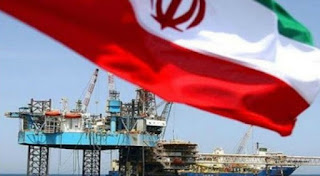Why did Iran's energy consumption double in a decade?
Iran has had one of the most accelerating energy consumption rates in the world, despite very slow economy growth during last decade, but what is the reason?
A statistical and analytical agency within the U.S. Department of Energy says Iran consumed almost 244 million tons oil equivalent (OE) of primary energy in 2013.
Of course, the U.S. energy Information Administration's (EIA) report, released June 19 covers the figures until 2013, but the official Iranian statistics indicate that the country's primary energy consumption exceeded 270 million tons OE (or 2 billion barrels OE) until March 2015.
Natural gas and oil accounted for almost all (98%) of Iran's total primary energy consumption, with marginal contributions from hydropower, coal, nuclear, and non-hydro renewables. The EIA says that Iran's primary energy consumption has grown by almost 50% since 2004.
Iran's power sector
IEA says Iran generated almost 224 billion kilowatt-hours (kWh - unit for measuring energy) of electricity in 2013, of which 92% was from fossil-fuel sources.
One of the biggest primary energy consuming sectors in Iran is power plants. The latest official statistics of Iran's Energy Ministry indicate that during last fiscal year, ended on March 20, 2015, the country produced 257.5 billion kWh of electricity.
Iran added 2.87 gigawatt (GW - unit for measuring power) to its power generation capacity during last year, while for the current fiscal year it's expected that power production level will increase by 2.5 GW to about 75.6 GW. As the statistics indicate, during the several years, Iran has increased power generation significantly.
For comparison - Iran's power generation capacity was 56.5 GW(or 156 billion kWh of electricity) in 2010, while this figure in 2004 was only 38 GW. As the official statistics indicate, Iran's power generation capacity doubled during the last decade.
Iran consumed about 49 billion cubic meters (bcm) of gas, as well as more than 19.5 billion liters of gas-oil and fuel oil in power sector during the last fiscal year, while these figures were 33 bcm and 5.7 billion liters respectively in 2010.
Iran's housing sector
The other sector which has a significant share in Iran's primary energy consumption is the housing sector. During last fiscal year, the housing sector of Iran consumed about 91 bcm.
Iran's housing sector consumes almost a half of the country's total produced sweet gas, while gas shares about 67 percent of the country's total primary energy consumption.
The country's total raw gas consumption increased from less than 90 bcm in 2004 to about 210 bcm in the last fiscal year.
Iran's gas consumption in all spheres during the last fiscal year
Sweet gas consumption
|
Last fiscal year (bcm)
|
Two years ago (bcm)
|
Change Y/Y
bcm
|
Housing sector
|
91
|
88.9
|
2.1
|
Industrial sector
|
32.45
|
29.8
|
2.65
|
Power plants
|
50.5
|
36.8
|
13.68
|
Re-injection
|
33.9
|
32.9
|
1
|
Flaring
|
11.7
|
11.7
|
0
|
Export
|
9.7
|
8.7
|
1
|
Total
|
229
|
209
|
Below is Iran's actual fossil energy consumption per day according to the data derived from National Iranian Oil Refining & Distribution Company's (NIORDC) annual report
Fiscal year
|
Total daily energy consumption
Kb of OE
|
Daily gas consumption
Kb of OE
|
Daily liquid fuels
Kb of OE
|
2004-2005
|
2931
|
1689
|
1174
|
2009-2010
|
3918
|
2504
|
1332
|
2010-2011
|
4027
|
2673
|
1274
|
2011-2012
|
4070
|
2707
|
1290
|
2013-2014
|
4120
|
2688
|
1362
|
2014-2015
|
4383
|
-
|
-
|
The statistics of NIORDC (table above) indicates that the country's actual fossil energy consumption reached 1.6 billion barrel of OE, but this is just "actual energy consumption", not all consumption.
In fact, about 22 to 25 percent of Iran's total energy consumption is wasted without reaching any consumer and isn't included in actual energy consumption statistics.


Comments
Post a Comment